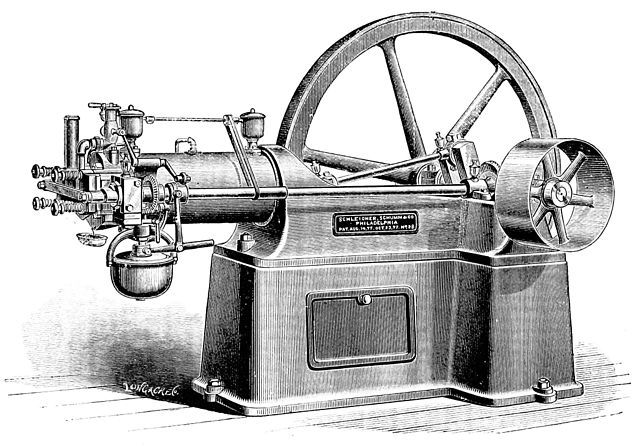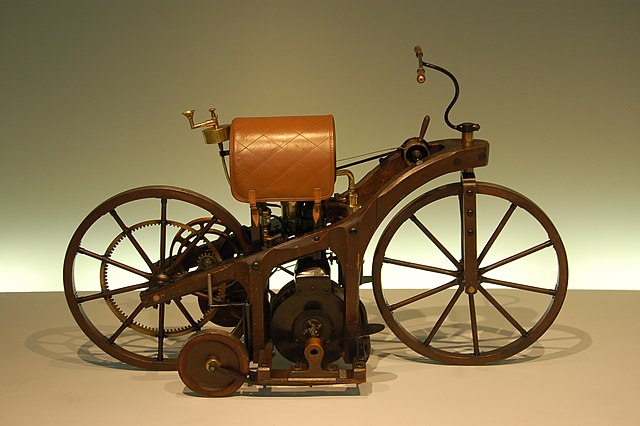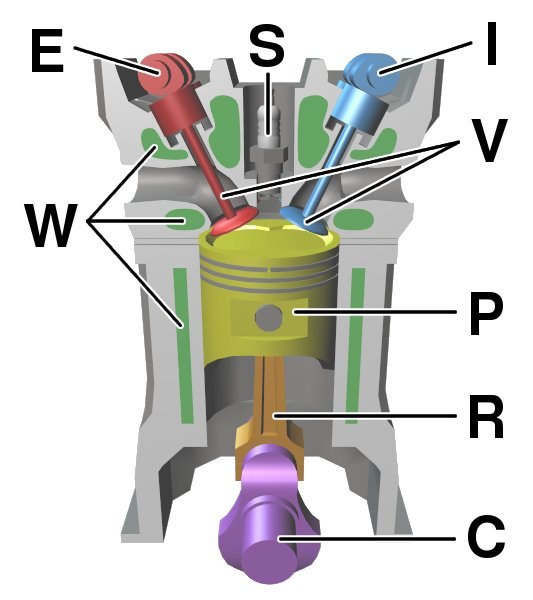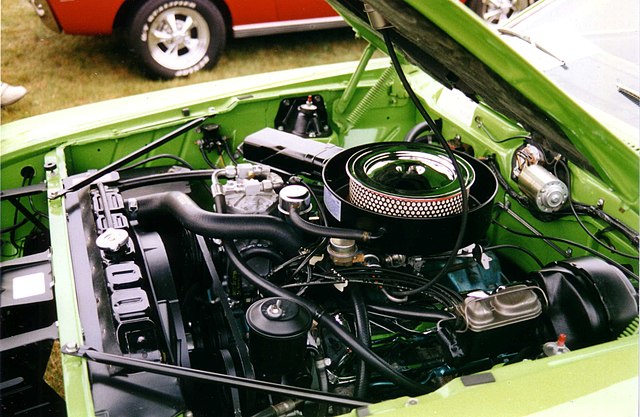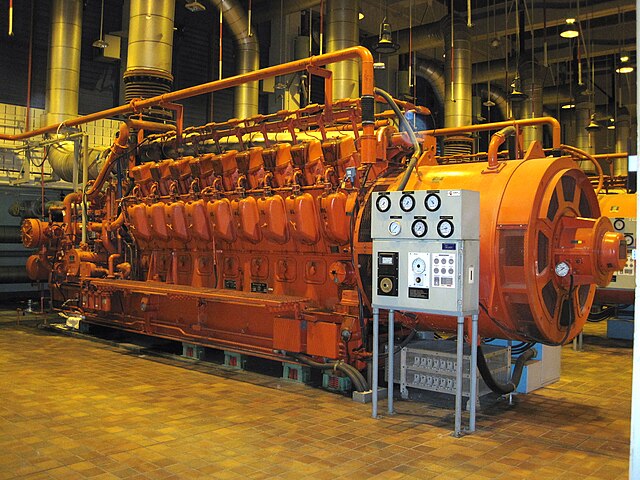The Otto engine was a large stationary single-cylinder internal combustion four-stroke engine designed by the German Nicolaus Otto. It was a low-RPM machine, and only fired every other stroke due to the Otto cycle, also designed by Otto.
The 1860 Lenoir Engine
The Otto/Langen atmospheric engine of 1867
An 1880s era American Otto engine for stationary use
1885 Daimler's Petroleum Reitwagen
Internal combustion engine
An internal combustion engine is a heat engine in which the combustion of a fuel occurs with an oxidizer in a combustion chamber that is an integral part of the working fluid flow circuit. In an internal combustion engine, the expansion of the high-temperature and high-pressure gases produced by combustion applies direct force to some component of the engine. The force is typically applied to pistons, turbine blades, a rotor, or a nozzle. This force moves the component over a distance, transforming chemical energy into kinetic energy which is used to propel, move or power whatever the engine is attached to.
Diagram of a cylinder as found in an overhead cam 4-stroke gasoline engine: C – crankshaft E – exhaust camshaft I – inlet camshaft P – piston R – connecting rod S – spark plug V – valves. red: exhaust, blue: intake. W – cooling water jacket gray structure – engine block
Reciprocating engine of a car
Diesel generator for backup power
Bare cylinder block of a V8 engine



